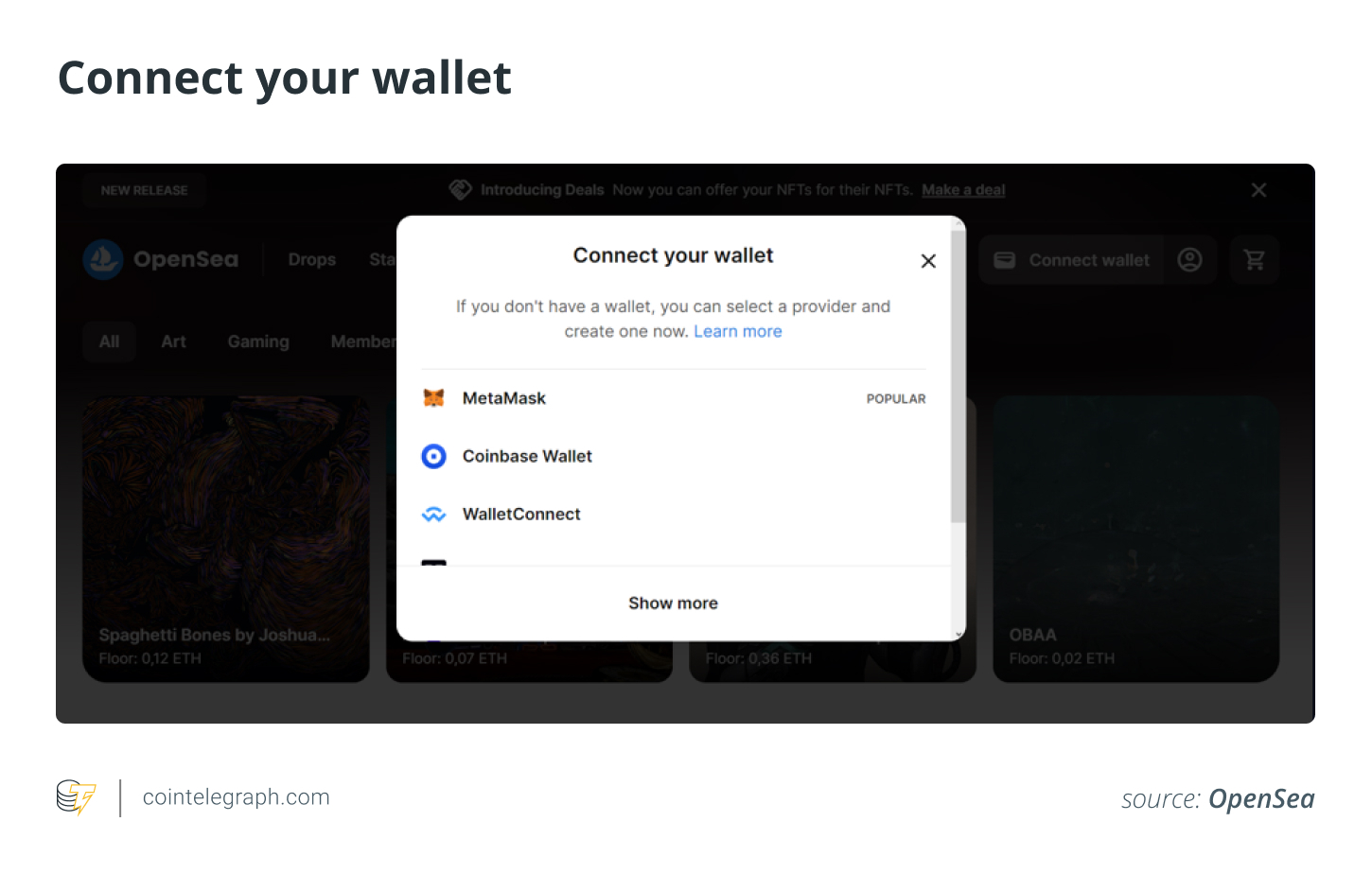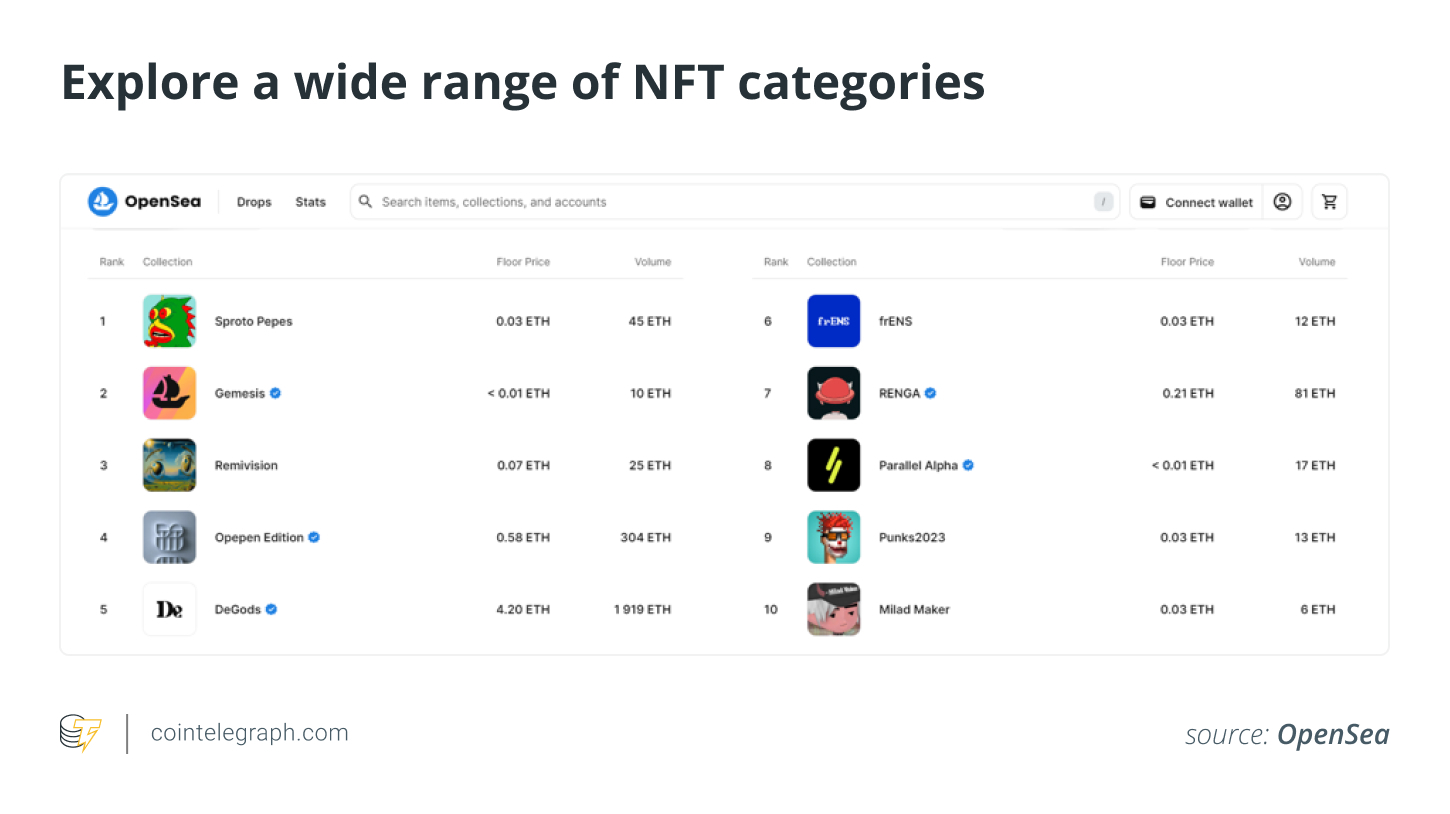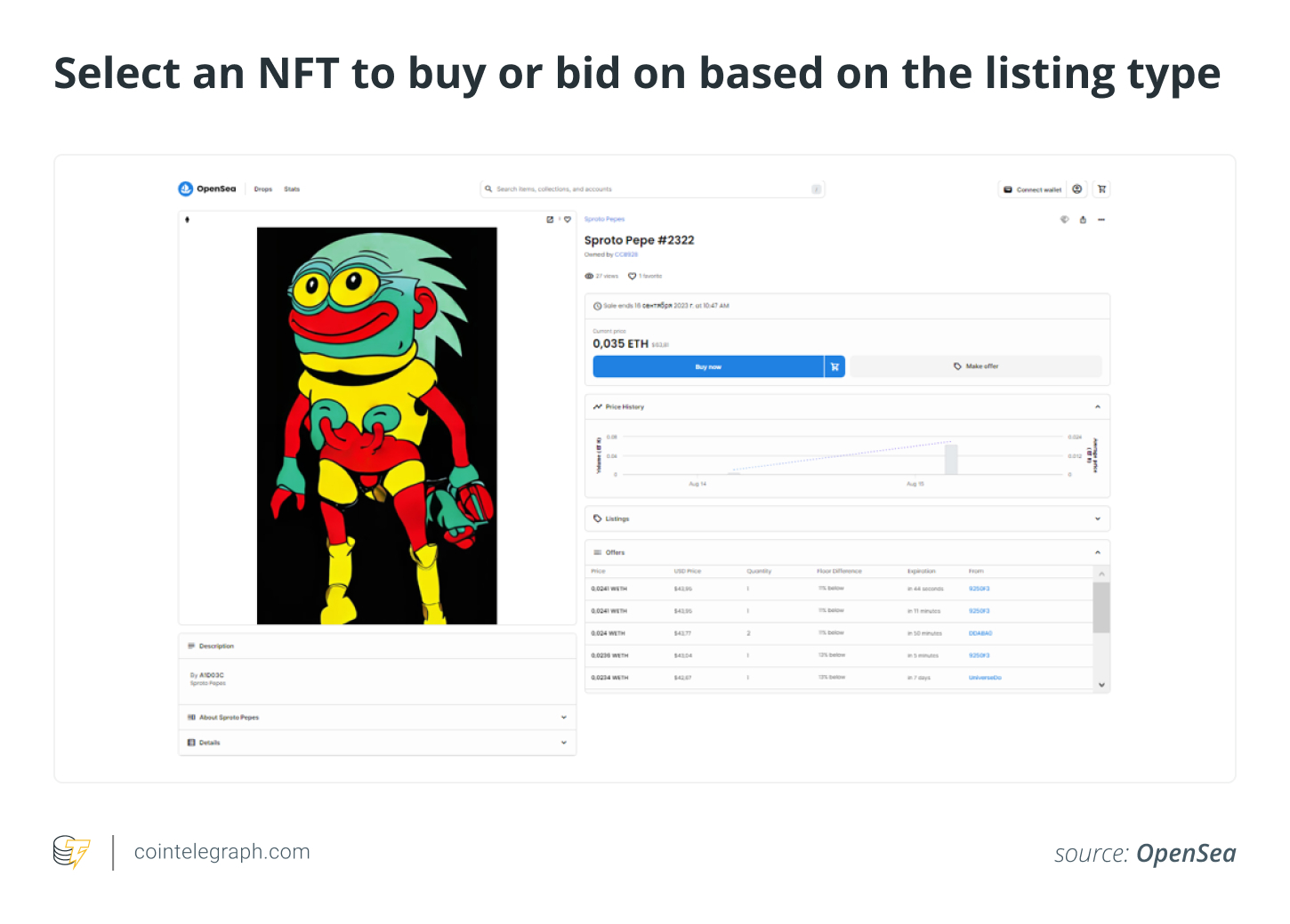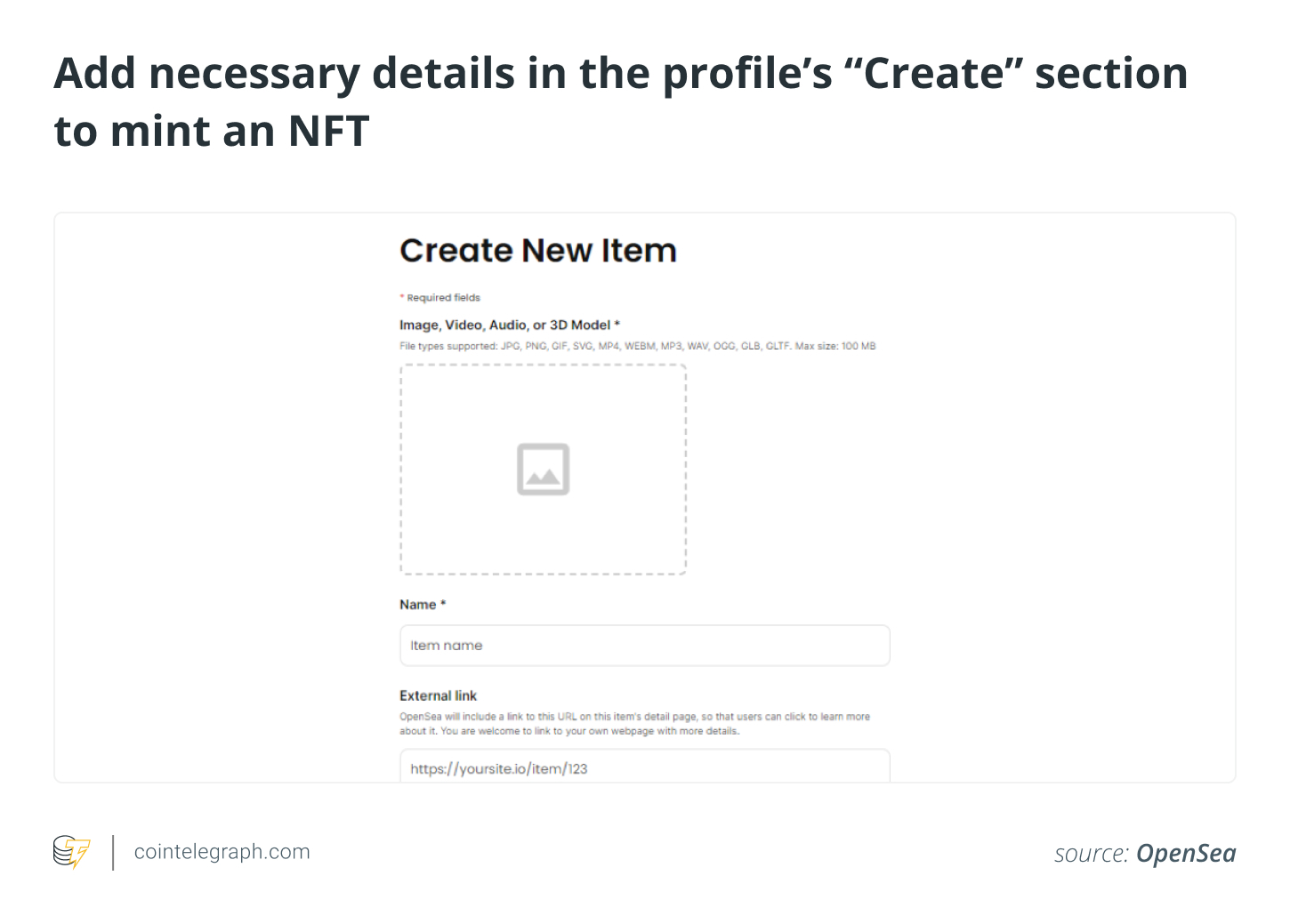The rise of non-fungible token (NFT) marketplaces has ushered in a new era, fundamentally changing the way we perceive and interact with digital assets. They offer artists a new medium to showcase their creations and create a direct and meaningful connection with their audience. OpenSea has played a central role in this revolution.
What is OpenSea?
OpenSea, the brainchild of Alex Atallah and Devin Finzer, was born in 2017. Their mission was clear: to build an open and easy-to-use marketplace for NFTs. Recognizing the transformative potential of these assets, the founders wanted to provide an NFT platform that would enable creators and collectors to actively participate in the emerging digital ownership economy.
As the popularity of non-fungible tokens (NFTs) soared, OpenSea nimbly expanded its horizons to include a wider range of blockchain networks and standards. This strategic move allowed the platform to welcome the diverse spectrum of NFT projects that were taking shape, allowing it to tap into an ever-growing audience. OpenSea’s commitment to embracing interoperability and inclusivity further strengthened its reputation as a leading NFT marketplace.
How does OpenSea work?
OpenSea operates as a blockchain-based aggregator marketplace designed for buying, selling, and trading NFTs. It functions much the same as well-known e-commerce platforms such as eBay or Etsy, but in a decentralized manner.
In parallel with these platforms, OpenSea facilitates transactions between individuals, but with a unique twist: it deals exclusively with different types of NFTs, ranging from art, music, collectibles, virtual lands, sporting goods and domain names to useful NFTs such as membership cards.
The platform’s distinguishing feature lies in its non-custodial approach. Transactions take place via self-executing smart contracts, ensuring a fair and secure exchange. Despite the absence of intermediaries, OpenSea collects a 2.5% fee on all secondary sales, which helps cover the platform’s operational costs.
In addition to supporting the Ethereum standards ERC-721 and ERC-1155, OpenSea has seamlessly integrated protocols for several other blockchains, including Solana and Polygon, among others.
Due to the often exorbitant transaction fees on the Ethereum network, OpenSea integrates the Polygon blockchain, a layer 2 scaling solution that enables faster and more cost-effective transactions. Switching between the Polygon and Ethereum networks on OpenSea is a simple process that can be accomplished with just the click of a button. This easy-to-use feature is especially beneficial for newcomers and ensures a smooth experience.
As for OpenSea’s infrastructure, the platform announced a major overhaul in 2022, transitioning from the Wyvern protocol to the newly developed Seaport protocol. The motivation behind this transition was to streamline operations and improve market efficiency, with the potential to significantly reduce transaction costs on the platform. Additionally, the protocol improves the readability and understanding of wallet signatures, further improving the user experience.
Key features of OpenSea
The OpenSea NFT marketplace boasts a range of distinctive features that support its popularity and usefulness, including coin functionality, transparent transactions and lower gas costs powered by layer 2 solutions, personalized storefronts, educational resources and more.
Key features of OpenSea include:
- Minting functionality: Creators can establish ownership rights and authenticity for their digital creations.
- Transparency: OpenSea’s self-executing smart contracts ensure secure, transparent transactions without intermediaries.
- Multi-blockchain support: OpenSea’s integration with different blockchains improves accessibility beyond Ethereum.
- A wide range of NFT categories: OpenSea includes a wide range of NFT types, such as art, music, collectibles, virtual lands, domains, and utility NFTs, that appeal to a wide audience.
- User-friendly interface: OpenSea offers an intuitive interface that allows easy navigation, suits all user levels, and simplifies NFT management.
- Customizable storefronts: Creators can personalize storefronts to showcase their NFT collections and enhance branding.
- Community Engagement: OpenSea encourages interaction through comments, followers, and exploration of popular collections.
- Educational Support: OpenSea offers educational tools, which help users navigate NFTs, understand gas rates, and make informed choices.
- Continuous Innovation: OpenSea is constantly evolving through new features, enhancements and integrations and adapting to the dynamic NFT landscape.
- Inclusivity: OpenSea promotes inclusivity by supporting multiple languages and diverse content aimed at a global audience.
Advantages and disadvantages of OpenSea
When assessing the pros and cons of OpenSea, certain aspects stand out. On the plus side, OpenSea offers an easy-to-use and straightforward experience. It is open to all users without any fees.
The platform imposes minimal fees on NFT sales, broadening its appeal. Furthermore, the availability of multiple blockchains offers alternatives to circumvent Ethereum’s high transaction fees.
On the other hand, OpenSea’s exclusive reliance on cryptocurrency for payments may limit accessibility for those accustomed to traditional payment methods. Due to the open nature of the platform, there is a risk of encountering low-quality, fraudulent NFT listings.
Furthermore, OpenSea lacks comprehensive regulations and a fully decentralized governance model, which could impact decision-making processes and alignment with decentralized principles.
How to use OpenSea
Before you start using OpenSea, there are a few important steps you should take to ensure you get the most out of the platform. Newcomers must sign up on the official OpenSea website. Users should ensure they have an Ethereum wallet, such as MetaMask, ready for seamless interaction. The next step is to choose a compatible wallet and install it as a currency store for transactions.
Next, users need to fund their wallet and create an OpenSea account by logging in via the “Connect Wallet” tab in the “Menu” section. Ether (ETH) is the primary currency for NFT trading on OpenSea, but Wrapped Ether (wETH) is used within smart contracts for smoother integration. Although ETH and wETH are preferred, over 150 other tokens are accepted.

Browse various NFT categories using filters and options. Click on the name or thumbnail of an NFT for detailed information about the item, its creator, and its price.

Choose ‘Buy Now’ or ‘Place a Bid’ based on the offer type. Users must confirm the transaction via their wallet to complete the ownership transfer.

To create an NFT, start by creating an entry in the “Create” section of your profile. Upload images and details, customize the OpenSea URL, and set price or auction parameters. The next step is to confirm the transaction and create the NFT.

To cancel an offer, click ‘Cancel offer’ at the top right of the item’s page. Please consider associated gas costs, which fluctuate based on network activity.
The future of NFT marketplaces
In the face of an ever-evolving NFT landscape, OpenSea continues its journey of evolution and innovation. The platform’s adaptability to new trends and asset categories, along with its commitment to efficiency and community engagement, bodes well for its continued prominence.
As the competition matures, OpenSea faces increasing competition, especially in terms of volume of activity, which has been a determining factor in its success. Despite obstacles, OpenSea is poised to shape the digital property domain and lead the way in redefining how we interact with art, commerce and property in an age of advancing technology and digital assets.
Collect this item as an NFT to preserve this moment in history and show your support for independent journalism in the crypto space.

